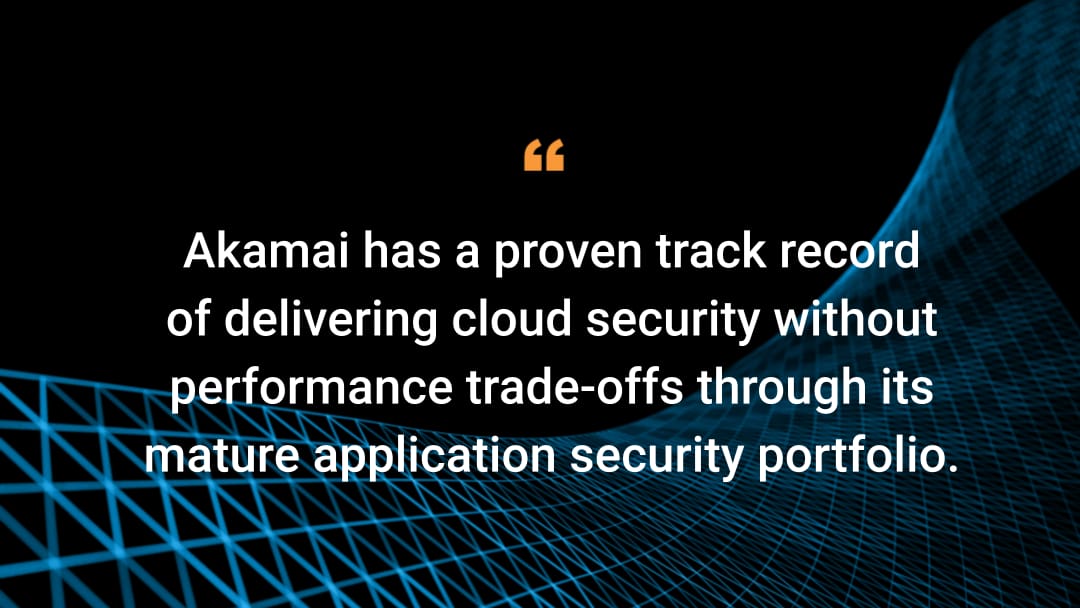Akamai Named a Leader in IDC MarketScape for Network Edge Security as a Service

Akamai has been named a Leader in the IDC MarketScape: Worldwide Network Edge Security as a Service (NESaaS) 2023 Vendor Assessment. The IDC MarketScape noted Akamai’s “proven track record of delivering cloud security without performance trade-offs through its mature application security portfolio.”
Critical controls for Zero Trust
NESaaS is an integrated security solution that combines multiple network security technologies as a cloud service to address key customer use cases of access policy enforcement and threat detection, which are critical controls for enterprises that are adopting a Zero Trust architecture.
The IDC MarketScape report noted Akamai’s broad portfolio of Zero Trust enterprise security solutions, including Akamai Enterprise Application Access and Akamai MFA, which offer Zero Trust Network Access (ZTNA), and Akamai Secure Internet Access Enterprise, which offers DNS firewall, secure web gateway, and cloud access security broker (CASB) functionality.
In Akamai’s vendor profile, the IDC MarketScape report notes how we leverage our extensive cloud infrastructure to ensure a performant user experience. Read on to learn why these facts are important for enterprises that are embracing Zero Trust.
Taking the first step toward Zero Trust
Akamai has worked closely with thousands of enterprises over the past five years to help them map out their Zero Trust strategies. One question that’s always asked is “Where do we start that transformation journey?”
The reason that question comes up so often is that moving from the old approach of perimeter-based security to a Zero Trust approach is not a forklift change that can be accomplished in a few months or even years. Few, if indeed any, enterprises have the human or financial resources available to accomplish this transformation quickly.
Moreover, the move to Zero Trust should have minimal impact on the efficiency and performance of the business and any impact should be positive.
Therefore, starting with a single component of a Zero Trust architecture that aligns with an enterprise’s business priorities is a pragmatic and a realistic approach; it doesn't really matter what that starting point is — it could be Zero Trust Network Access (ZTNA) for secure application access, microsegmentation to prevent ransomware, or a DNS firewall to provide defense in depth against malware.
Beyond the first step
Regardless of starting point, enterprises should partner with a vendor that, over the course of the transformation project, provides additional products and services that integrate and complement that initial step. And that’s exactly what Akamai can provide.
For example, customers that start with a ZTNA project by deploying Enterprise Application Access and Akamai MFA to provide secure access to private applications can add Akamai’s industry leading web application and API protection service to defend against distributed denial-of-service, bot, and other attacks at scale.
Enterprise Application Access connectors are deployed as virtual machines in the customers’ application hosting environment and connect the application to the identity aware proxy in the Akamai Connected Cloud. To add further protection, customers who use Akamai Guardicore Segmentation can ringfence these connectors to ensure that only legitimate traffic from the connectors can reach the application.
Performance matters
The IDC MarketScape report notes that performance of the NESaaS platform is equally as important as the capabilities; in fact, some people believe that performance is actually more important. (For transparency, I’m in the latter camp.)
Ever since we’ve needed security controls, which is about as long as the internet has been ubiquitous, users have been the leading indicator of performance. For example, back when web content filtering became the cool new security must-have, users complained about the internet running slowly if they experienced even minimal latency when browsing.
Today, users are even more vocal about the perceived impact the latest security controls are having on their ability to get work done efficiently. Applying security controls that stop threats without impacting performance and user experience is absolutely vital.
Increased security without decreased performance
Akamai’s secure web gateway automatically routes users’ web traffic to the best performing edge proxy to ensure that users experience minimal latency. All of that is done with a simple DNS configuration — there’s no need for customers to manually configure Internet Protocol Security (IPsec) tunnels and update them as they do with other solutions.
Enterprise Application Access gives customers acceleration out of the box with web-based apps thanks to Akamai’s CDN. For non-web apps, customers can activate acceleration via other Akamai delivery services. That means users’ get great application performance way beyond what they’ve been accustomed to with VPN access.
Akamai ensures performance by leveraging its massively distributed edge and cloud platform that puts security closer to users and keeps threats farther away.
Learn more
Learn more about Akamai’s Zero Trust security portfolio and Akamai’s application and API security portfolio.


